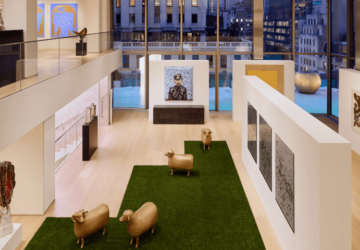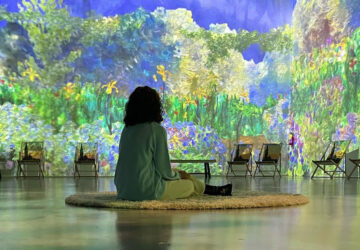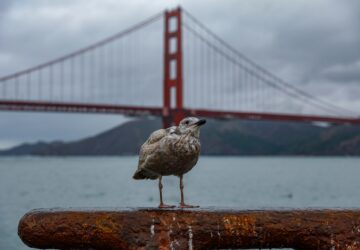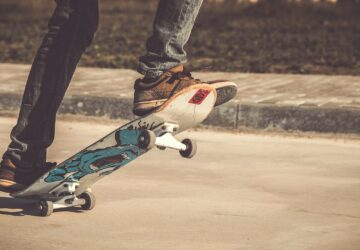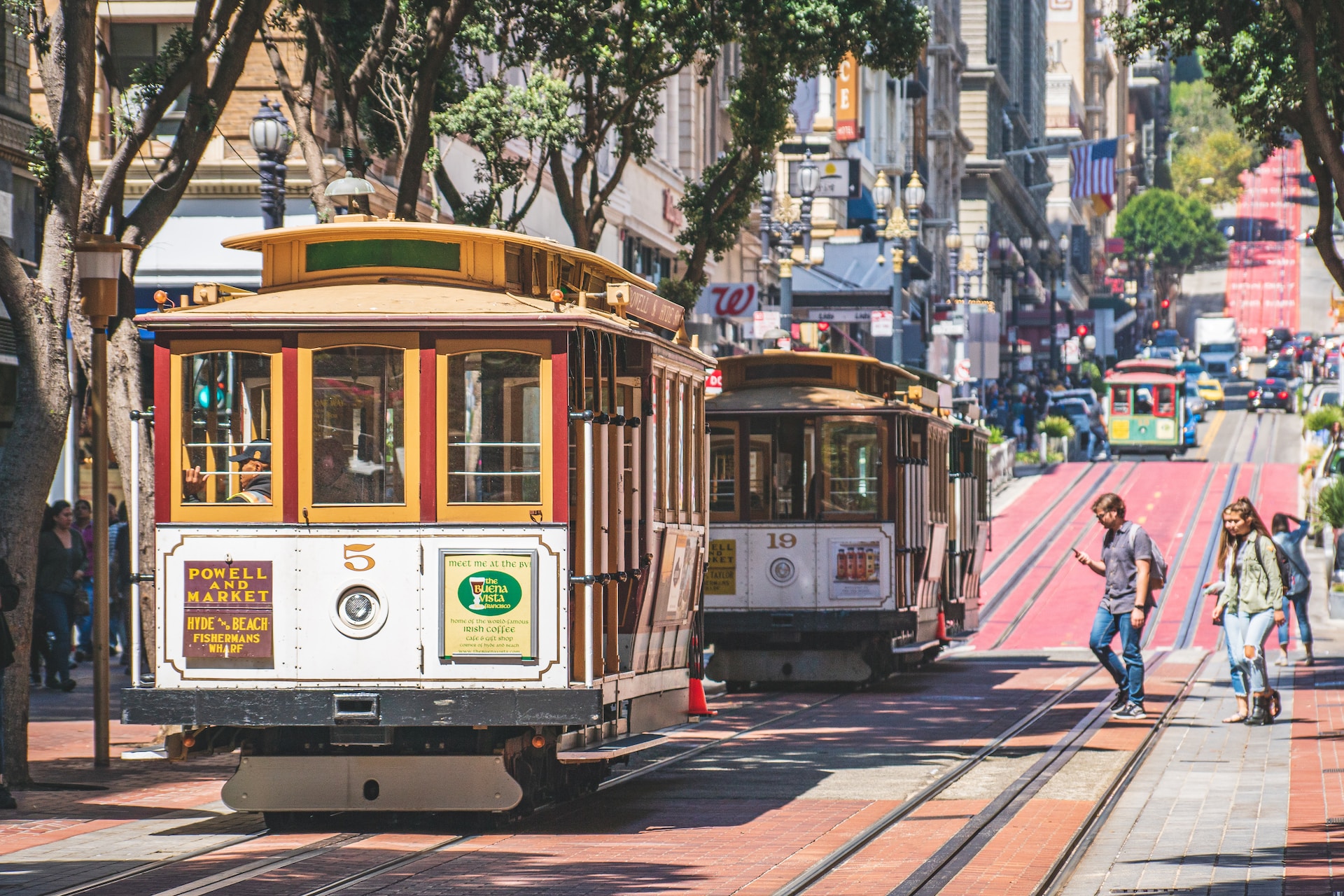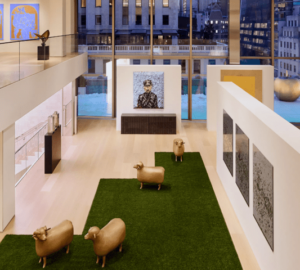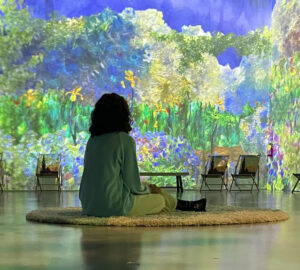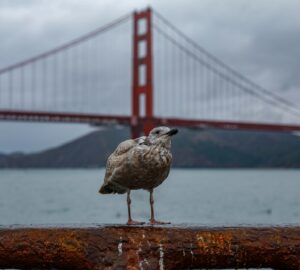Day 2: The Embacadero, Chinatown, Union Square, & Mission Dolores
For the second day, we’ll start with a walk along The Embacadero. This is a waterfront area that runs along the San Francisco Bay. There are many restaurants and cafes with outdoor seating where you can enjoy the view.
The Embacadero is also home to the Ferry Building. This building is a marketplace with food, drink, and shopping. The building also houses the San Francisco Visitor Information Center.
Chinatown is one of San Francisco’s most popular tourist destinations. It is the largest Chinatown in the United States and is filled with Chinese restaurants, shops, and temples. Some of the most popular attractions in Chinatown include the Golden Gate Fortune Cookie Factory, the Chinese Historical Society of America Museum, and the Tin How Temple.
Union Square is a popular shopping district in San Francisco. It is home to many high-end stores as well as some budget-friendly options. The square is also a popular gathering place for locals and tourists alike. There are many things to do in Union Square, but some of the most popular include shopping, people watching and taking in the sights of the San Francisco skyline.
The Mission District is home to many of San Francisco’s hipster bars, restaurants, and cafes. It is also a historic neighborhood with Victorian-style homes.
The Embacadero
The waterfront walkway known as the Embarcadero runs between Fisherman’s Wharf and the Ferry Building Marketplace. The Embacadero is known for its waterfront restaurants and cafes with outdoor seating that offer views of the Bay.
The Embarcadero is great for noticing activity around you. You can people watch and look out for ships and ferries. Spot the sculptures along the walkway. There are numerous cafes, eateries, and even museums located along the Embarcadero. As you walk towards the Ferry Building, you can see the Bay Bridge in the distance.
Ferry Building Marketplace
The Ferry Building Marketplace is located at the end of the Embarcadero. It is a food lover’s paradise with over 40 vendors selling everything from cheese and chocolate to oysters and olive oil.

It is stunning to look at and boasts historical architecture. This is where the ferry people used to land. The Ferry Building Marketplace now has a sizable food hall that is among the best in the nation.
You can discover renowned restaurants serving fine cuisines within. Taco feasts, fresh oysters, wine tastings, and good times are all possible. Inside the Ferry Building, in addition to the restaurants, lies the San Francisco Farmer’s Market. As keepsakes from your journey, you may purchase local crafts and fresh fruit here.
Chinatown
A must-see visit on any three-day San Francisco itinerary should include Chinatown. It is the oldest and largest Chinatown in the United States.
The Dragon Gate serves as the neighborhood’s entry, and once inside, you’ll find a number of old buildings, lampposts decorated in Chinese style, red lanterns, and Asian-inspired furnishings.
Explore the alleys of Chinatown as you go around. Among other delicious food items, you may eat dim sum, Peking duck, egg custard tarts, and drink bubble tea. Visit the gift stores and browse the eye-catching paintings in the windows. Find businesses that are different and sell fortunate bamboos, kites, and lanterns.
You may also want to pick up some souvenirs while you are here, such as a tea set, calligraphy set, or jade bracelet. As you walk around, it is not uncommon to see people bowing or praying in front of the temples.
Union Square
After walking around Chinatown, go south to Union Square, San Francisco’s version of a high street, where you can do some real shopping.
Numerous famous names are represented here, including some successful San Francisco companies like Apple, Gap, and Levi’s (not exactly San Francisco but within Silicon Valley). SF’s Museum of Modern Art is just a short stroll from Union Square in the direction of Yerba Buena (MOMA).
You can shop for clothes, souvenirs, and just about anything else in the many stores around Union Square. The area is also home to a number of hotels, making it a great place to stay if you’re looking for convenience. If you get hungry, there are plenty of restaurants in the area to satisfy your appetite.
Mission Dolores
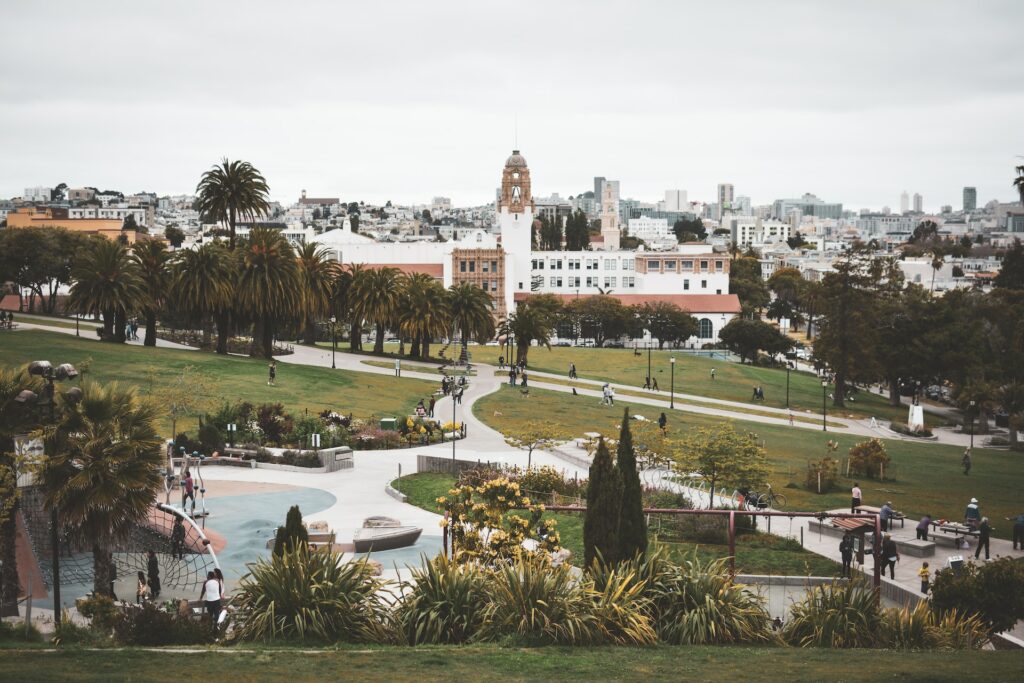
The Mission Dolores is the oldest building in San Francisco. It was built in 1776 and is located in the Mission District. The Mission District is known for its Latino culture, murals, and taquerias.
The Mission Dolores is a beautiful adobe building with a courtyard that contains olive trees. The interior of the church is simple but elegant. The mission also has a small museum that contains artifacts from the early days of California history.
Day 3: Golden Gate Park, Haight-Ashbury, & Napa Valley
After a busy first two days in San Francisco, take it easy on your third day with a visit to Golden Gate Park. Then head on over to Haight-Ashbury, the iconic neighborhood of the Summer of Love. And finally, end your day with a drive to Napa Valley for some wine tasting.
Golden Gate Park
On your last day, head to Golden Gate Park. This is one of the largest urban parks in the world. There are over a thousand acres of land to explore, and it is home to a number of museums, lakes, and gardens.
The de Young Museum is one of the most popular attractions in Golden Gate Park. It houses an impressive collection of American art from the 17th century to the present day. If you’re interested in history, be sure to visit the California Museum of Native American Art. This museum contains a collection of over 15,000 artifacts from more than 200 tribes.
Although, if you want a peaceful day, you can go to the Japanese Tea Garden. This is a beautiful garden with a waterfall, a koi pond, and a teahouse. You can also visit the Conservatory of Flowers, which is home to a number of rare and exotic plants.
Haight-Ashbury
Once you’re done exploring the Golden Gate Park, make your way to Haight-Ashbury. This is the neighborhood that was made famous by the Summer of Love in 1967. Today, it is a hipster haven with vintage stores, independent boutiques, and a lively music scene.
Be sure to visit some of the iconic sites from the Summer of Love, such as the Haight-Ashbury Free Clinic and the Fillmore Auditorium. Then check out some of the unique shops on Haight Street, such as Amoeba Music and funky clothing stores. If you’re feeling hungry, there are plenty of restaurants and cafes to choose from.
Napa Valley
After a day of exploring San Francisco, take a drive to Napa Valley for some wine tasting. This is one of the most famous wine regions in the world, and it is home to over 400 wineries.
There are a number of ways to tour Napa Valley, including by car, bike, and even hot air balloon. You can also take a wine train that will take you on a leisurely ride through the vineyards.
No matter how you choose to tour Napa Valley, be sure to visit some of the top wineries, such as Robert Mondavi, Beringer, and Domaine Chandon. And if you’re feeling hungry, there are plenty of restaurants in the area to satisfy your appetite.
San Francisco’s Cable Cars
San Francisco is famous for its cable cars. They are a great way to get around the city, especially if you want to avoid walking up hills. The cable cars run from early in the morning until late at night.
You can buy tickets for a single ride or a day pass. If you plan on riding the cable car more than once, it is cheaper to buy a day pass.
Keep in mind that there is 3 cable car lines in the city:
- Powell-Mason: Takes you to Fisherman’s Wharf from Union Square. It is particularly well-liked by tourists because of the route. With this trip, you may make stops in Chinatown and the Financial District.
- Powell-Hyde: This route passes gorgeous homes, some very steep slopes, and even comes close to Lombard Street’s twisted section.
- California: In contrast to the other two lines, which are north to south, the California line is an east to west line. The line here is often the shortest and the least touristic of all the queues. A thrilling ride is made possible by the terrain’s steepness.
Featured Image: Photo by Daniel Abadia on Unsplash
